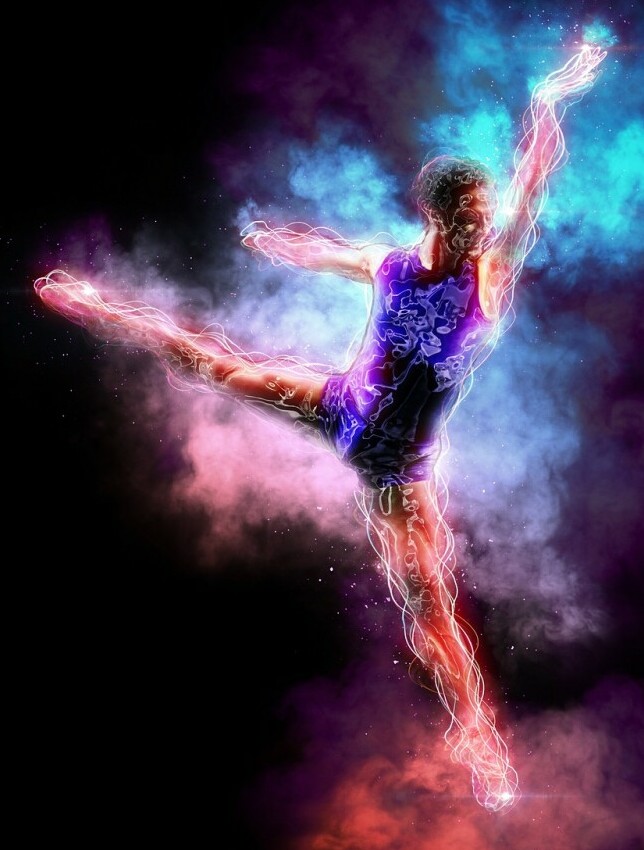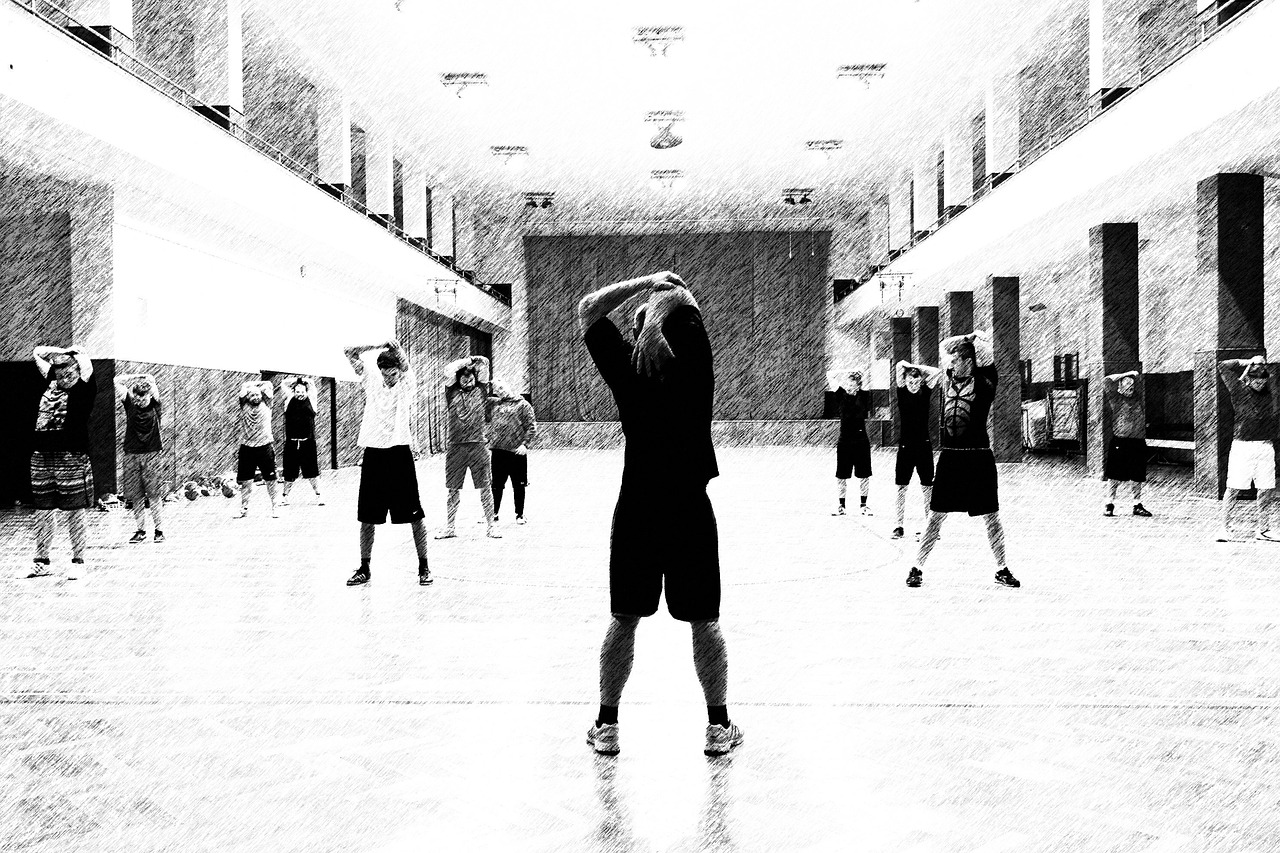Dynamic Warm Up Exercises are a great way for dancers to start their class.
Today, dynamic warm up exercises are a standard routine for athletes ranging from amateurs to professionals.
What Are Dynamic Warm Up Exercises?

Dynamic warm up exercises uses stretches that are “dynamic,” meaning you are moving as you stretch.
For decades, static stretching, which requires holding a stretch for 10 or more seconds while motionless, was the most popular type of warm-up for athletes and dancers alike, but we have since discovered that a dynamic warm up is far better to get the dancers body fired up and ready to move.
Static stretches are best left for the end of the class.
Dynamic stretching is ideal as the core of a warm-up routine for several reasons:
- Dynamic warm up exercises activate muscles you will use during your workout. For example, a lunge with a twist is a dynamic stretching exercise that engages your hips, legs, and core muscles. Whether you are doing weighted lunges in the gym, or lunging for a soccer ball, the muscles involved have already been engaged during your warm-up.
- Dynamic stretching improves the dancers’ range of motion. So if you feel like you can barely bend over to tie your shoes after a long day at work, a dynamic warm-up routine can help you feel more limber.
- Dynamic stretches improve body awareness. If you don’t warm up and hop into a soccer game for example, it may take a while for your body to perform optimally. Moving as you stretch challenges your balance and coordination; skills that could help your performance.
- Warming up in motion enhances muscular performance and power. Studies reveal dynamic stretching before a workout can help you lift more weight and increase overall athletic performance compared to no stretching or static stretching. If you are trying to get stronger, build more muscle, or simply perform better, a dynamic warm-up routine is likely your best bet.
What Are Some Examples Of Dynamic Exercises?

Here are some examples of some dynamic ways to warm up your body before a dance class.
Arm Circles
Stand with feet shoulder-width apart and hold arms out to the sides, palms down, at shoulder height. Move your arms in circles 20 times in each direction. Progressively increase the size of the circles as you become more flexible.
Arm Swings
Stand with arms outstretched forward, parallel to the floor with palms facing down. As you step forward, swing your arms in unison to the right so your left arm is in front of your chest and your fingers point to the right. Keep the torso and head facing forward and move only at the shoulders.
Swing your arms in the opposite direction as you step again. Repeat five times on each side.
Arm Reaches
Reach the arms up past your head like you are climbing a rope, then reach out to the sides incorporating a light bounce so that you feel the side of your waist stretching.
Hip Circles
Stand on one leg, using a countertop for support, and gently swing the opposite leg in circles out to the side. Do 20 circles in each direction. Switch legs. Progressively increase the size of the circles as you become more flexible.
High-Stepping
Stand with your feet parallel and shoulder-width apart. Step forward with the left leg and raise the right knee high toward your chest (use a wall for balance, if needed). Use both hands (or one, if using the other for balance) to pull the knee up farther. Pause and lower right leg, then repeat on the other side. Continue “high-stepping” five times on each leg as you walk forward.
Heel-to-Toe Walk
Stand with feet shoulder-width apart. Take a small step forward, placing your right heel on the ground and rolling forward onto the ball of your foot. Rise as high as possible on your toes, while bringing the left foot forward and stepping in the same heel-to-toe roll. Repeat five times on each leg.
Lunges with a Twist
Stand with your feet parallel, then take an exaggerated step forward (keep one hand on a wall for balance, if needed) with your right foot, planting it fully on the floor in front of you. Allow the knee and hip to bend slowly while keeping your torso upright. Keep your right knee directly over the ankle – do not allow it to go beyond your toes.
Slightly bend your left knee, lowering it until it is a couple of inches above the floor (or as far as flexibility allows). In this position, reach overhead (skip the overhead reach if your shoulders are compromised) with your left arm and bend your torso toward the right. Return your torso to an upright position, and step forward with the left foot, back to starting position. Repeat five times on each side. (Note: Do not attempt this if you have trouble with balance.)
Step Up and Over
Stand with feet shoulder-width apart, hands on hips (or lightly touching a wall in front of you for balance). Shift your weight to your left leg and lift your right leg until your thigh is parallel to the ground, then step out to the right side as if stepping over an object. Pause, then lower into a squat (or half squat). Pushing up through the heels, stand up and return to the starting position. Repeat five times on each side.


I found this article to be a goldmine of useful information for dancers of all levels. The emphasis on dynamic warm-up exercises illuminates how critical movement-based stretches are for enhancing flexibility, range of motion, and overall performance. Detailed examples of exercises offer practical guidance that can be easily integrated into any dancer’s routine. It’s a reminder of the power of proper warm-up to not only improve performance but also to prevent injuries. Thank you for sharing these invaluable insights!
Thanks for stopping by Dean. Times have certainly changed from when I was young. We had to do endless static stretches on the floor before class.
Hi Michel, This article is a delight to read. There is so much information and explanation! As I’m reading, I want to try the dynamic warm-up exercises. You make everything simple and accessible for any age group to comprehend.
I am an alternative health practitioner of the Alexander Technique (founded in static postures for body re-education) and Feldenkrais (movement-based body re-education). So, I’m very interested in these techniques I intend to experiment with.
I trust that your dancers perform so much better with this practical approach.
Blessings and Success.
Your insightful exploration of dynamic warm-up exercises for dancers is commendable. Your attention to detail in elucidating the benefits of dynamic stretching and providing a diverse range of exercises demonstrates a thorough understanding of the needs and challenges faced by dancers in their training regimen. Your article serves as a valuable resource for dancers of all levels, offering practical guidance on how to integrate dynamic warm-ups effectively into their routine to enhance performance and reduce the risk of injuries. Keep up the excellent work in sharing valuable insights and empowering dancers to optimize their practice through informed and mindful warm-up routines.